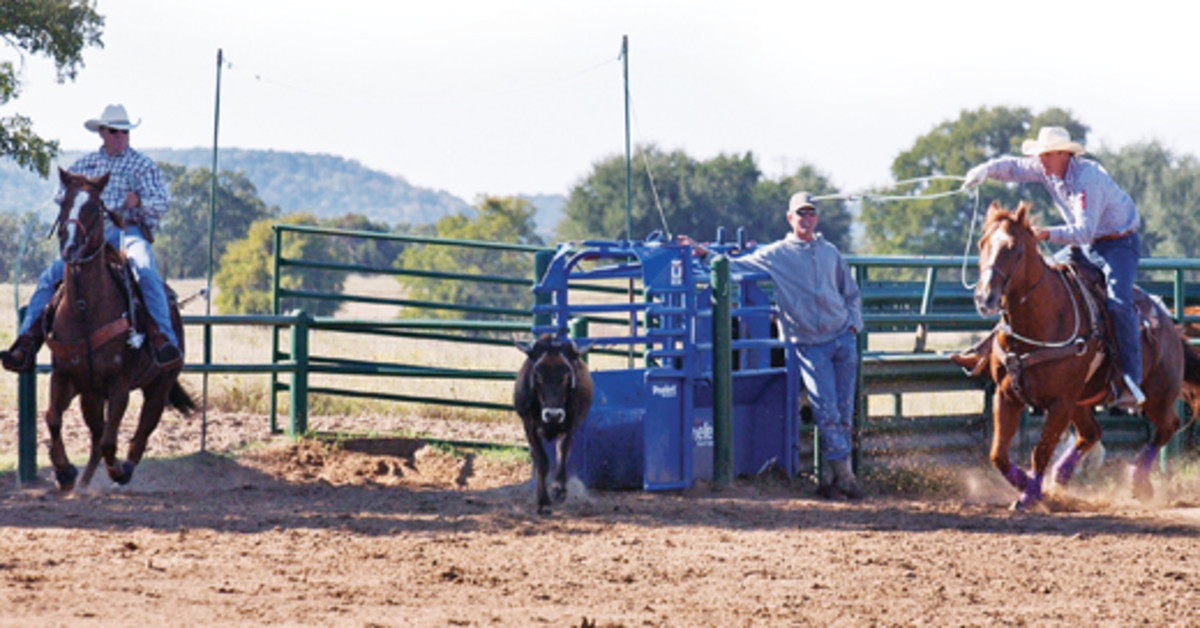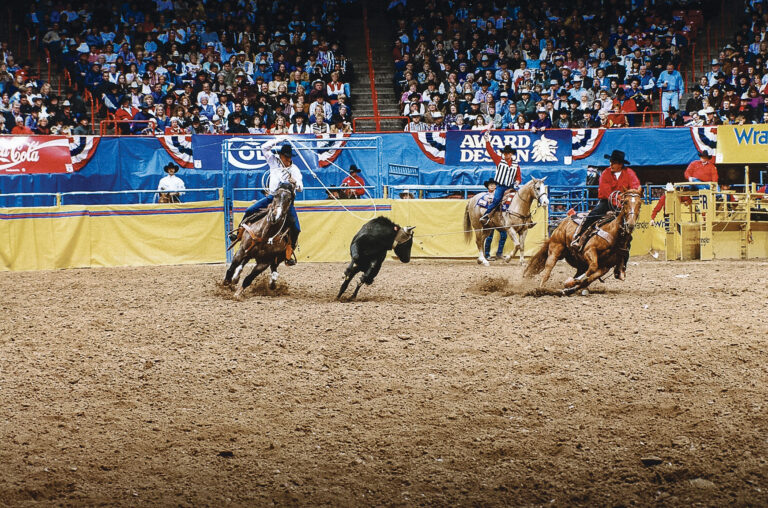There are so many strategies to choose from, depending on the situation. There are different ways you prepare yourself and your horses, mentally and physically, to give yourself the best advantage. From the pro roper trying to win a world championship at the National Finals, where it’s a small arena with a lot of left fence and as much electricity as you’ll ever face, to trying to win the George Strait, BFI, Wildfire and the USTRC Finals, every setup throws you a unique set of challenges. At a little different level of competition, Perry Di Loreto’s Reno Rodeo Invitational pays $100,000 a man, and the Booger Barter ropings put up trucks and trailers. Regardless of which end of the numbers spectrum you fall, that’s pressure. And you have to prepare yourself for those big opportunities, so you don’t pressure up and choke. Pressure applies to all levels of roping. It’s how you prepare for those events ahead of time, and approach them once you get there, that’s key. For example, I wouldn’t go to the National Finals after practicing letting steers way out there and riding a long-score horse, or go to Salinas riding my NFR horse after nodding and riding all week at home. It takes several years for a rookie to get seasoned to be able to adapt to all the different scenarios. I think that’s why you still see a lot of veterans hanging around. Experience is a huge factor in team roping. To be successful, you have to be mentally sound in handling the different obstacles that arise and make smart strategic decisions.

The teams who’ve been successful in recent times have set up a practice arena the same as the Thomas and Mack in the fall. They practice the conditions they’re going to face a month prior to the event, so they’ve got that groove when they get there. You know you need to be fast every round at that rodeo. Most go-rounds are fairly tough, so you have to go for broke to win a round. The average is typically pretty easy, so that’s something to consider also. To win the world, you usually need to keep both of those things in mind. My strategy at the National Finals is to place in the rounds when you draw a good steer, then hopefully be hanging around to do well in the average at the end, too. That was my strategy with Kory (Koontz) a couple years ago (NFR ’05), and it was working to a tee until I cut my thumb off. We’d placed along in the rounds and were in the lead in the average, so we had a huge advantage.

If you play it too conservatively and go for the average only from day one, you can shoot yourself in the foot at the Finals. If that’s your strategy, and you go out in one of the late rounds, you’ve got nothing. One year, Clay (O’Brien Cooper) and I had placed along pretty good and the average had gotten pretty easy. We backed off and started being more conservative, then about the eighth round I hickeyed a horn and took us out of the average.

Other guys head to the Finals with the strategy of going for every round, start to finish. To me, by doing that you risk not placing in the average by taking those extra chances. When you go all out like that, you’re more likely to make a mistake, like waving it off a steer’s horns. Then, when you try to regroup and that steer’s circling, it’s pretty easy to split the horns and take yourself completely out of the average.

The strategy I try to use at long-score rodeos like Cheyenne and Salinas, and ropings like the Wildfire, BFI, USTRC Finals and Mike Cervi Memorial roping is a little more conservative. When you’re roping more steers over a longer score and the cattle run hard, you have to change things up. Under those conditions, you have to rely on an awesome head horse and rope smart. You can’t break a barrier and you can’t miss, or you eliminate yourself.

The better horse you have and the better horseman you become, the more consistency you’ll develop, and the more you’ll prosper under the longer score conditions. You might be able to get away with a little less of a horse over shorter scorelines. But that won’t fly in those wide-open setups.

I like all kinds of conditions. I like the short scores, because it eliminates the luck of the draw factor somewhat. If you have a steer that runs hard, you can get a good start, reach a little and still win something. At Cheyenne or Salinas, if you have to place in a round and draw a runner, you’re pretty much eliminated. By the same token, if you draw one of the good ones and don’t waste him at a rodeo like that, you’re pretty much guaranteed money.










